PHP框架Laravel学习笔记——集合的常用方法
Posted 币圈网
tags:
篇首语:本文由小常识网(cha138.com)小编为大家整理,主要介绍了PHP框架Laravel学习笔记——集合的常用方法相关的知识,希望对你有一定的参考价值。
一.常用方法
- all()方法,转换为属性形式输出,使用 dd 方法看类型;
$collection = collect([1, 2, 2, 3, 4, 4, 4]);
dd($collection->all());
- 1
- 2
PS:$collection->dd()方法可以以 dd()模式输出,还有 dump()模式;
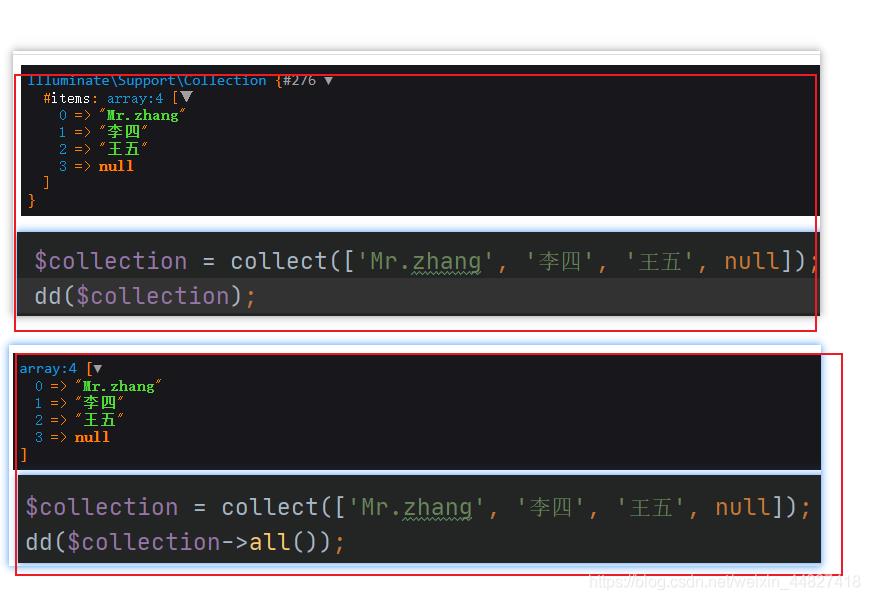
- avg()方法返回平均值;
//返回平均值
$collection = collect([1, 2, 3, 4]);
return $collection->avg();
//返回分组平均值
$collection = collect([[\'男\'=>1], [\'女\'=>1], [\'男\'=>3]]);
return $collection->avg(\'男\');
- 1
- 2
- 3
- 4
- 5
- 6
- 7
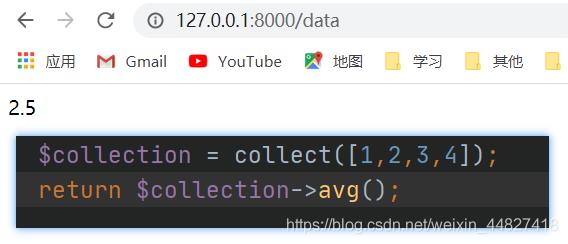
- count()方法返回集合总数;
return $collection->count();
- 1
PS:相关的还有 sum()、min()、max()等统计;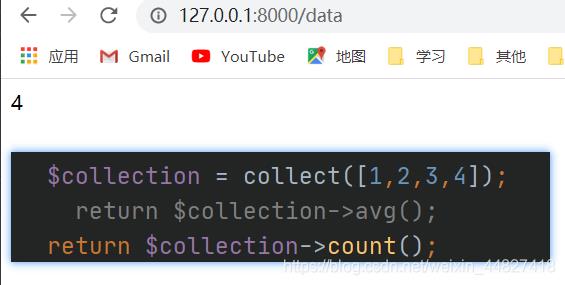
- countBy()方法返回数值出现的次数或回调函数指定值出现的次数;
//值出现的次数
$collection = collect([1, 2, 2, 3, 4, 4, 4]);
return $collection->countBy();
//回调搜索相同指定片段的值的次数
$collection = collect([\'xiaoxin@163.com\', \'yihu@163.com\', \'xiaoying@qq.com\']);
return $collection->countBy(function ($value) {
return substr(strrchr($value, \'@\'), 1);
});
- 1
- 2
- 3
- 4
- 5
- 6
- 7
- 8
- 9

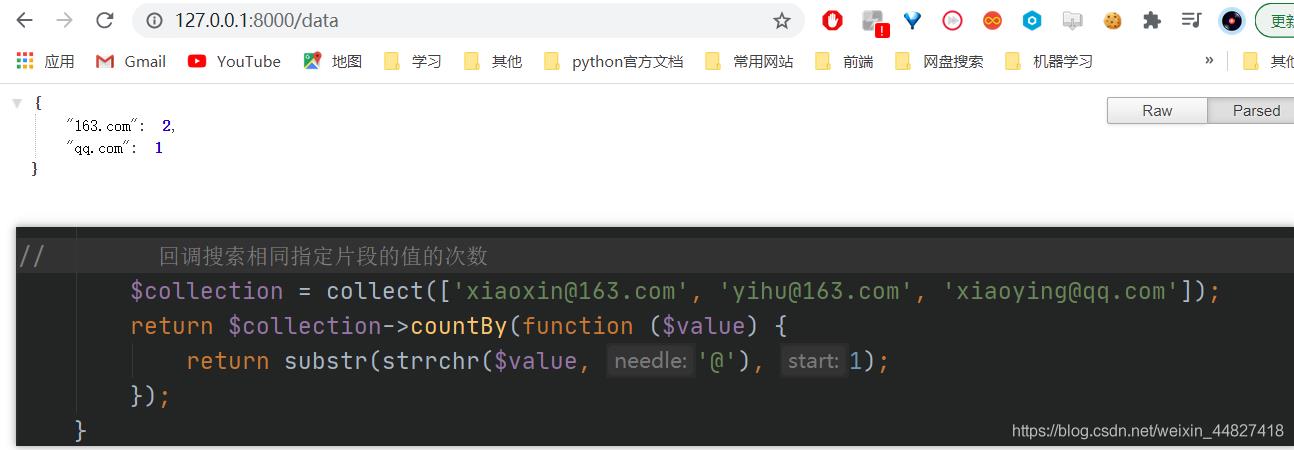
PS:相关的还有 groupBy()、keyBy()方法;
- diff()方法返回集合数组之间不相同的部分,组合新的集合;
//diff 返回两个集合中不相同的
$collection = collect([1, 2, 3, 4, 5]);
return $collection->diff([3, 5]);
- 1
- 2
- 3
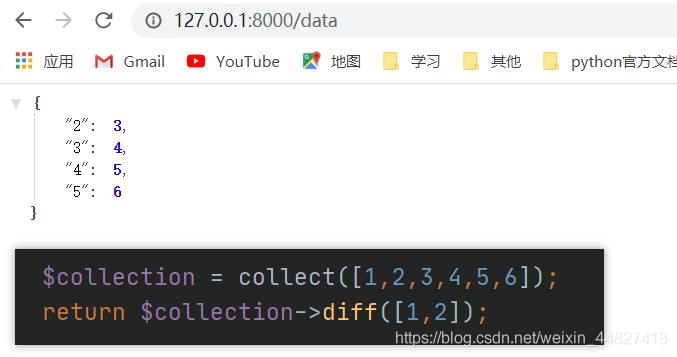
PS:其中还有 diffAssoc()、diffKeys()派生方法;
- duplicates()返回重复的值;
$collection = collect([1, 2, 2, 3, 4, 5, 5, 6]);
return $collection->duplicates();
//严格派生方法:
duplicatesStrict()
- 1
- 2
- 3
- 4
- 5
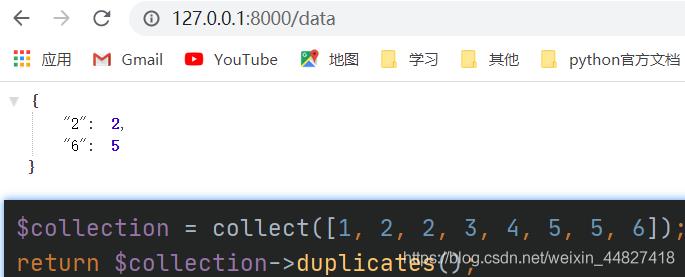
- first()返回成立后的第一个值;
//返回判断成立的第一条数值
$collection = collect([1, 2, 3, 4]);
return $collection->first(function ($value) {
return $value > 2;
});
- 1
- 2
- 3
- 4
- 5
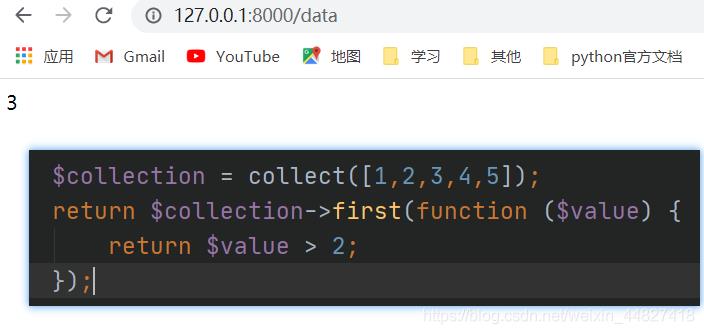
PS:相关的还有 every()、except()、only()、firstWhere()、last()等方法;
- flatten()将多维数组转换为一维;
$collection = collect([\'name\'=>\'Mr.Lee\', \'details\'=>[\'gender\'=>\'男\', \'age\'=>100]]);
return $collection->flatten();
- 1
- 2

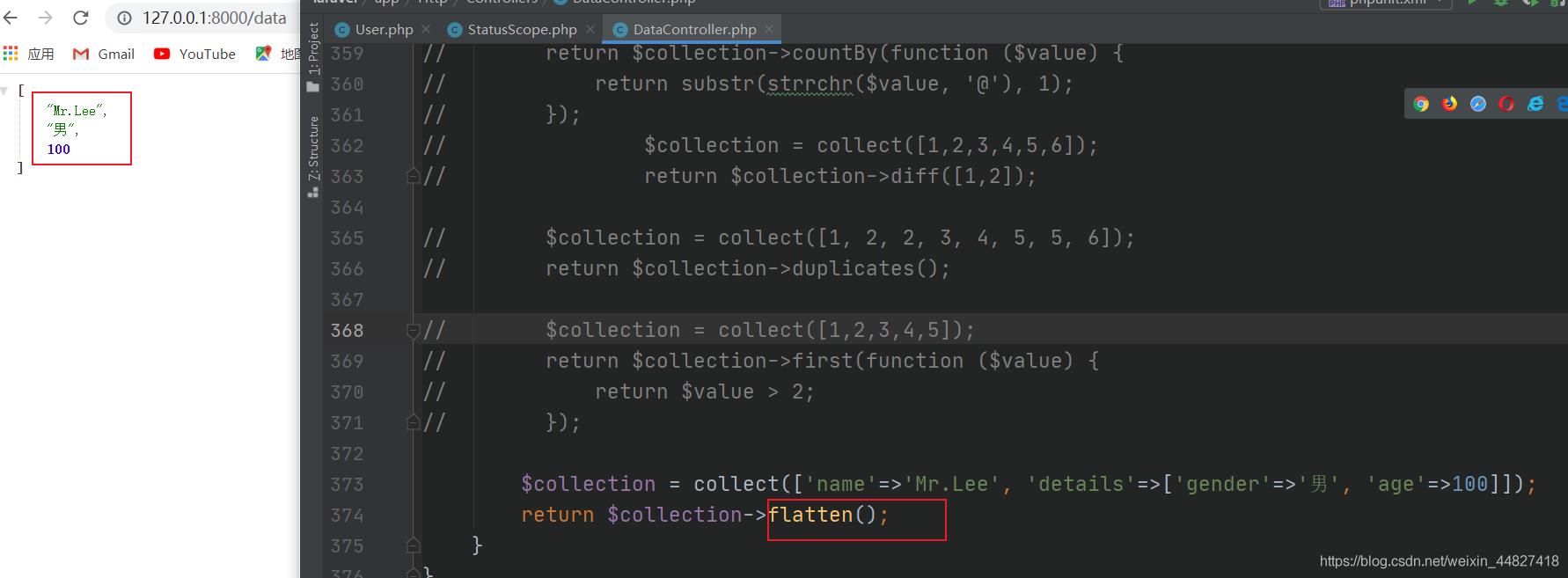
- get()通过键名找值;
$collection = collect([\'name\'=>\'Mr.Lee\', \'gender\'=>\'男\']);
return $collection->get(\'name\');
- 1
- 2
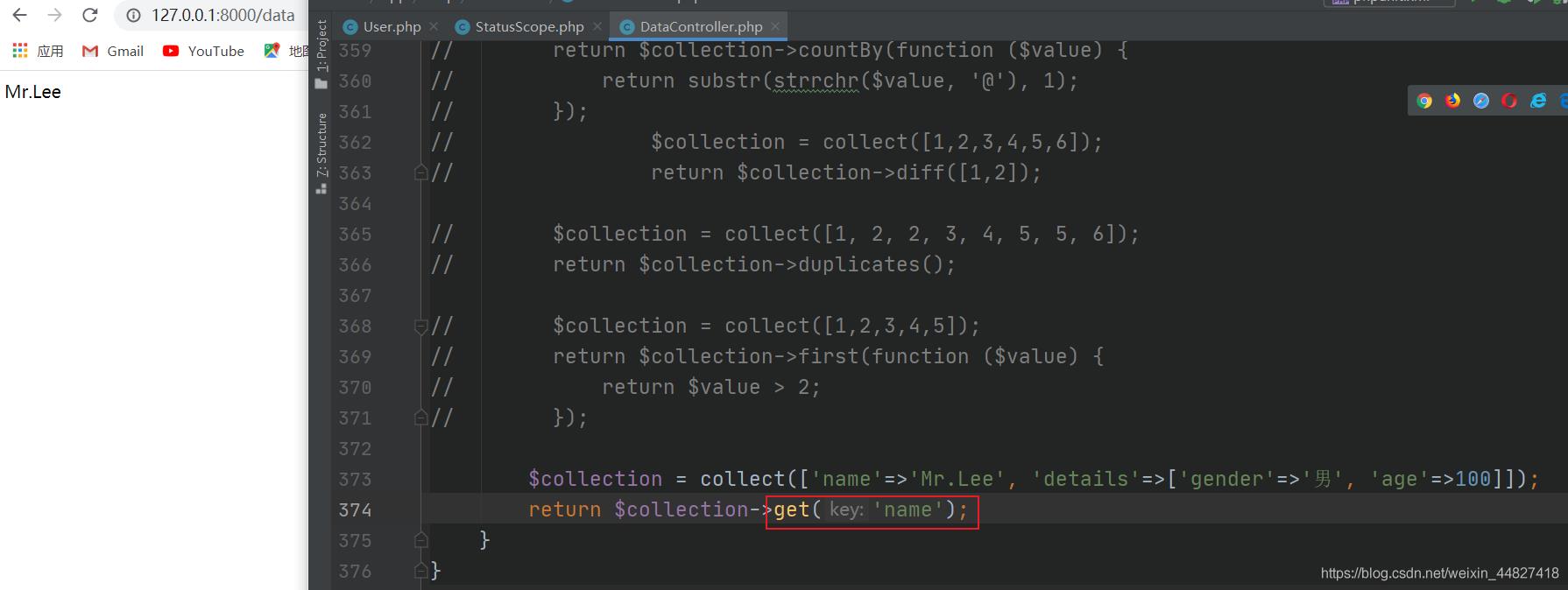
PS:相关的还有 pluck()等;
- has()判断集合中是否存在指定键;
return $collection->has(\'name\');
- 1
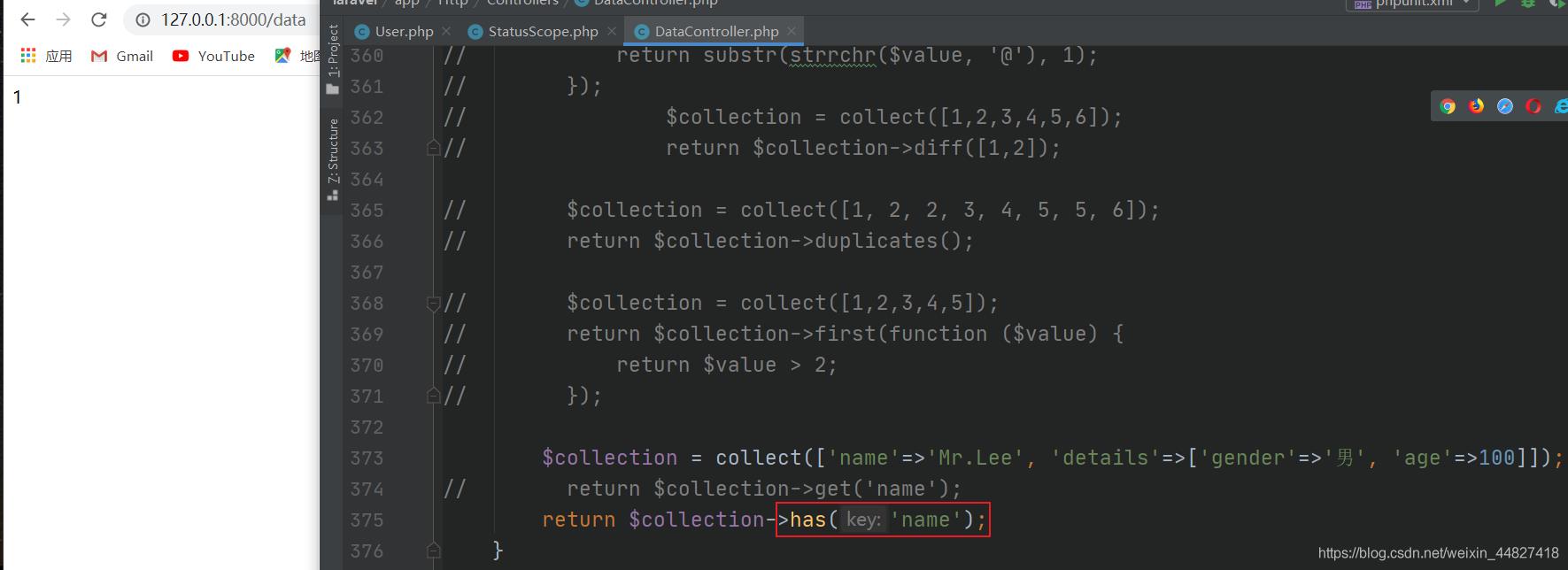
- pop()移出集合中最后一个值;
$collection = collect([1, 2, 3, 4, 5]);
//$collection->pop();
return $collection;
- 1
- 2
- 3
- 4
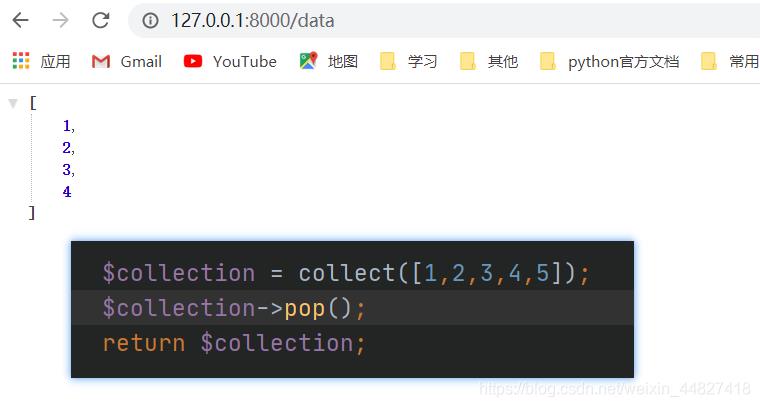
PS:相关的还有 pull()、push()、put()方法;
- slice()返回指定值后续的集合;
$collection = collect([1, 2, 3, 4, 5]);
return $collection->slice(3);
- 1
- 2
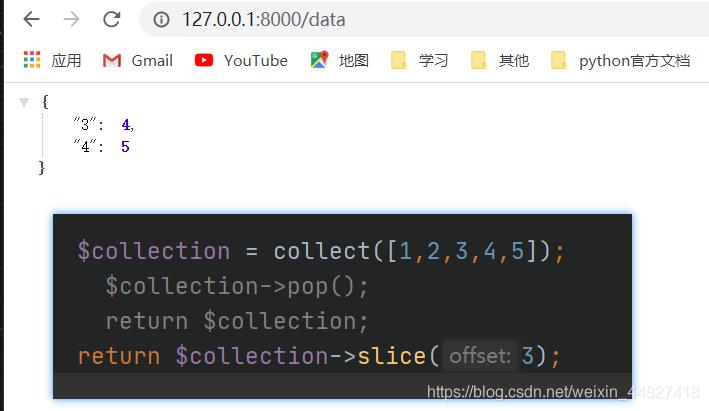
PS:相关的还有 splice()等方法;
- sort()返回指定值后续的集合;
$collection = collect([3, 1 , 5, 2, 7]);
return $collection->sort()->values();
- 1
- 2
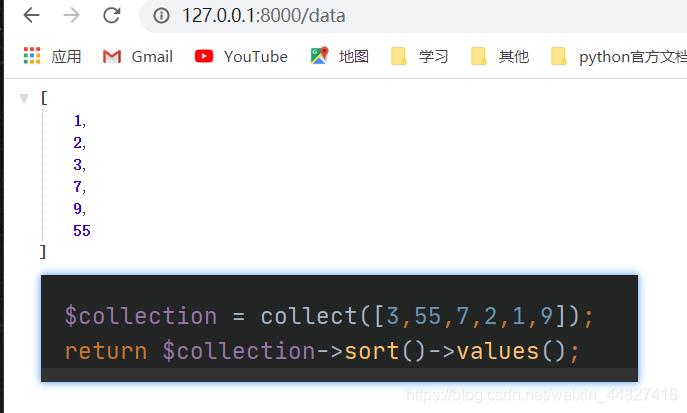
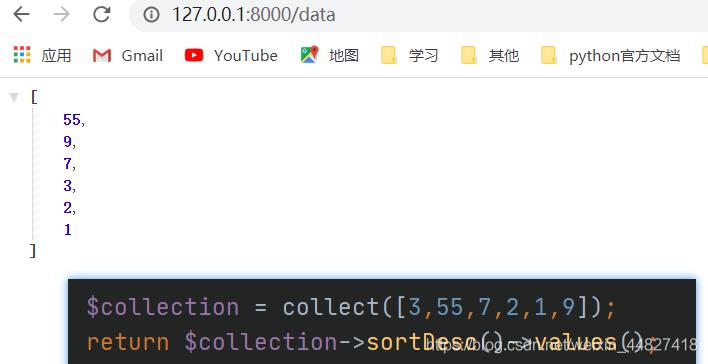
//需要配合 values()方法
PS:相关的有 sortBy()、sortByDesc()、sortKeys()等;
- where()系列方法,和数据库条件一样;
$collection = collect([ [\'name\'=>\'Mr.Lee\', \'gender\'=>\'男\'], [\'name\'=>\'Miss.Zhang\', \'gender\'=>\'女\'] ]);
return $collection->where(\'name\', \'Mr.Lee\');
- 1
- 2
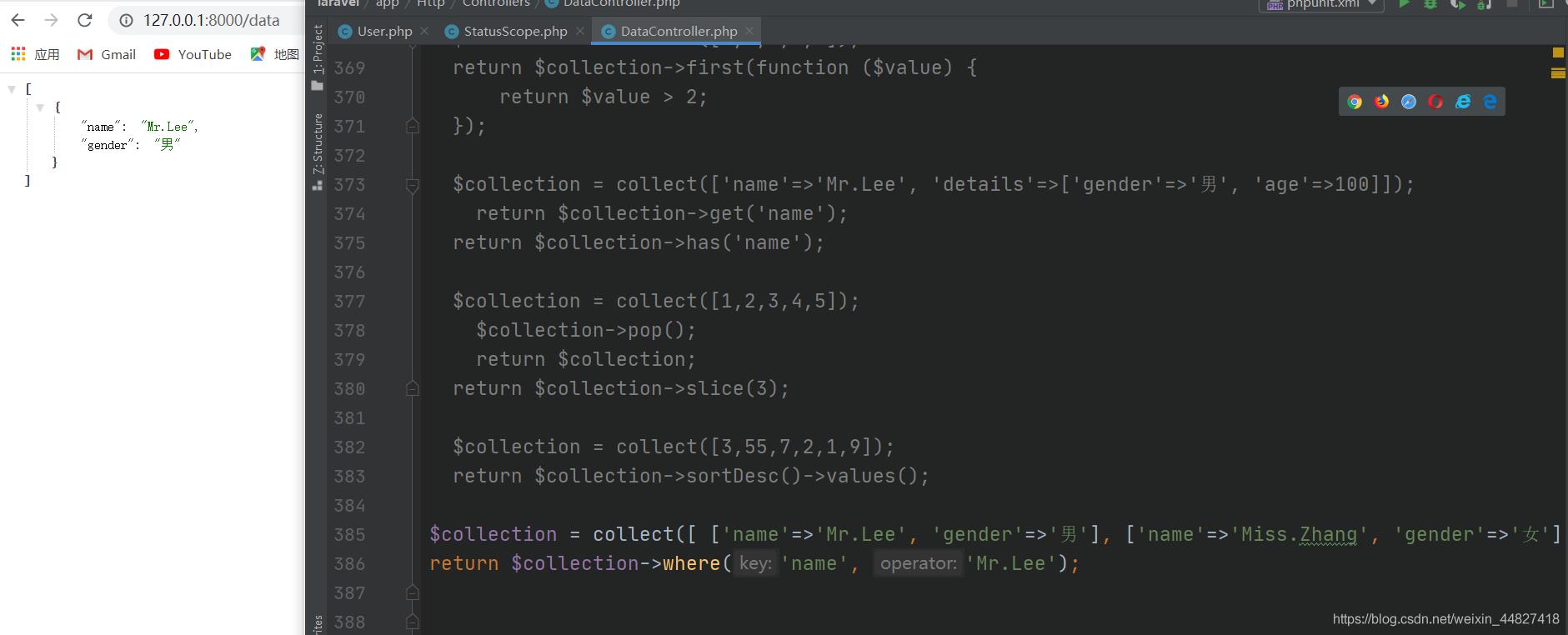
以上是关于PHP框架Laravel学习笔记——集合的常用方法的主要内容,如果未能解决你的问题,请参考以下文章